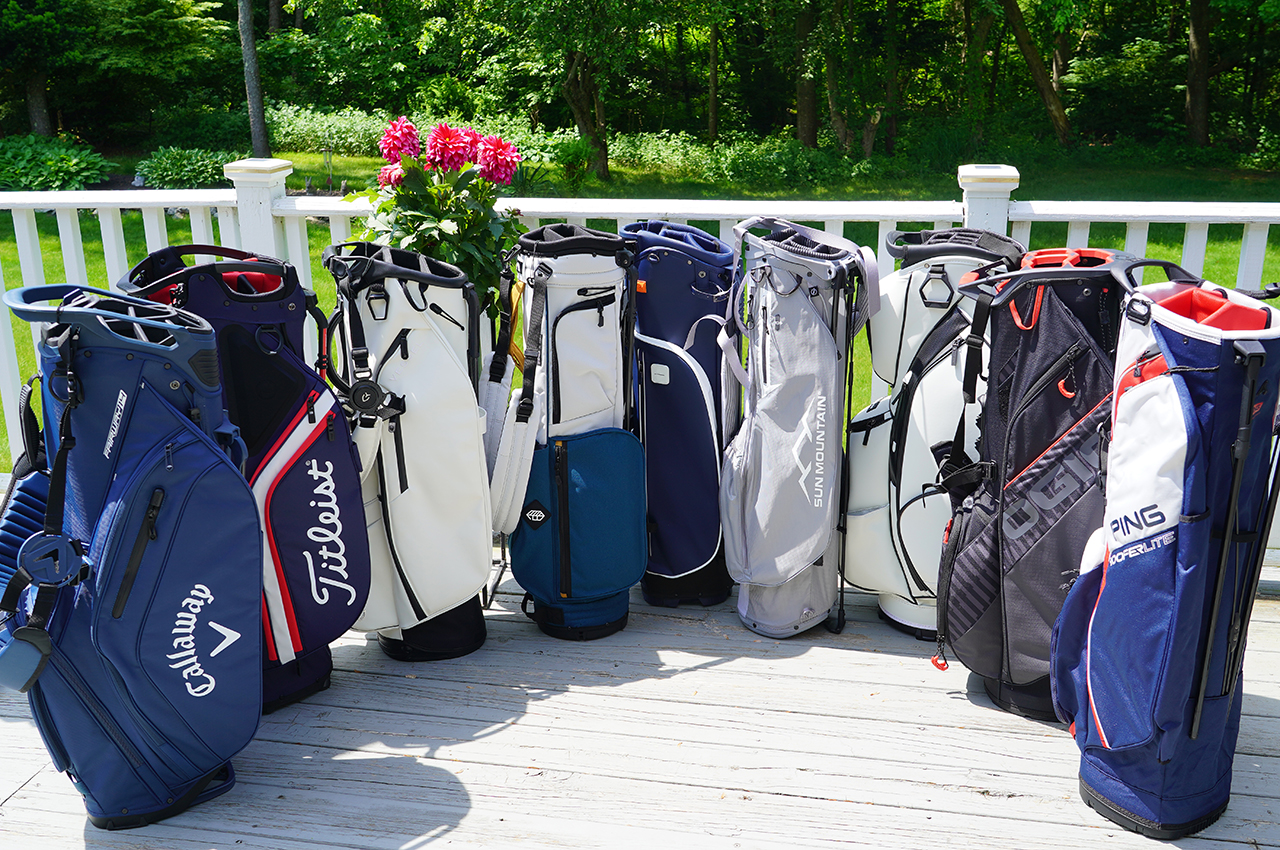The technologies designed into drivers, irons and other clubs every year make the newest models perform better than your old clubs, but it’s hard to talk about golf bags in the same way. A 10-year-old golf bag can carry your clubs just as well as a new bag, but with use and abuse over time, pockets rip, zippers get snagged, and leg mechanisms start to wear out.
To be fair to bag makers, while most offerings are very similarly shaped to the bags that have been available for years, brands have started using lighter and stronger materials that enhance durability and make carrying your bag easier. Shoulder straps are better designed, so toting your bag around is more comfortable, and these days, pockets are plentiful and ergonomically positioned to keep essential things within reach.
But with all that said, before you head to the shop and buy a new bag, it’s crucial to consider several factors to ensure what you buy matches your needs and your budget. Here are some things to keep in mind:
What type of bag do you need?
There are three types of golf bags, each designed for a different kind of player and different ways of getting around the course.
1. Stand Bags: This is the most versatile type of golf bag. Stand bags feature retractable legs that prop the bag upright on the ground, allowing them to go anywhere and keep your clubs organized and within reach for walking golfers. They also tend to have at least four or five pockets, so carrying a good supply of balls, tees, a jacket, a laser rangefinder and other accessories should be easy. Stand bags can also easily be attached to the back of a golf cart because their structured design provides support.
2. Cart Bags: If you are a golfer who never walks and only rides in a cart when you play, the retractible legs of a stand bag are not important to you, so consider a cart bag. These bags tend to be bigger and heavier, but if you or a caddie are never lugging the bag around the course, weight is not a significant consideration for you either. The biggest benefit of cart bags is they tend to have the most pockets, allowing you to bring lots of things with you when you play.
3. Carry Bags: Designed for golfers who exclusively walk when they play, carry bags are usually among the lightest bags available, but they often lack the number of pockets that stand bags and cart bags have. Why? The more pockets you have, the more stuff you’ll put in those pockets, and the more weight you’ll have to lug around the course. Carry bags are designed to hold your clubs, some golf balls and tees, and maybe add a laser rangefinger, but not much more.
View Golfweek’s best carry bags
Weight
|f you are in the market for a cart bag, the weight of your bag only comes into play when you are taking it in and out of your car. However, for players looking for a stand bag or carry bag, weight is important. Leather can be beautiful, but it can also be heavy, so synthetic materials like nylon and plastic, and retractable legs made from carbon fiber, can reduce weight while keeping your bag sturdy. At the same time, a light bag that is not durable or well-made is not worth buying.
Pockets
Everyone needs to bring their clubs to play, and you need some golf balls and tees too, but after that, everything else, theoretically, is optional. In reality, most players want to have more stuff than that on the course, which means your bag should have pockets and storage places for things like your wallet and your watch if you take it off when you play, snacks, a rain jacket, a laser rangefinder or GPS device, a water bottle and maybe a Bluetooth speaker. Think about what you like to bring to the course, and when you look over a new bag, think about where you would put your stuff. Is there a subtly-hidden valuables pocket? Is there a sleeve designed to hold a bottle, and is it insulated? If you wanted to bring rain pants, where would they go? Only consider buying a bag that is capable of carrying what you typically bring.
Shoulder straps
This is easy to overlook because most golfers think a lot about the bag itself, but if you are buying a carry bag or a stand bag, the shoulder straps are important, too. Adjustable, padded straps help distribute weight evenly across your shoulders, reducing strain and making carrying your clubs over a four-mile walk easier. A cushioned panel located where the bag will rest on your back can make the walk more comfortable, too. If the shoulder straps are designed so you wear the bag like a backpack, be sure you understand how to tighten and loosen the straps while you are wearing the bag so you can always get the ideal fit.
Durability
Golf bags get tossed around, dragged on dirt and in parking lots, baked in the sun and soaked in the rain, so durability is essential. Before you buy a bag, be sure the materials feel strong, the zippers are rugged and the seams are reinforced. If you live and play in a climate that gets a lot of rain, consider a bag made with waterproof materials. Yes, rain will fall into the top portion of the bag, but your valuables and stored accessories will stay dry. For someone in Scottsdale, Arizona, that’s not an important feature, but for someone in Seattle, Washington, it can be critical.
Below are several different golf bags that you might want to consider:

